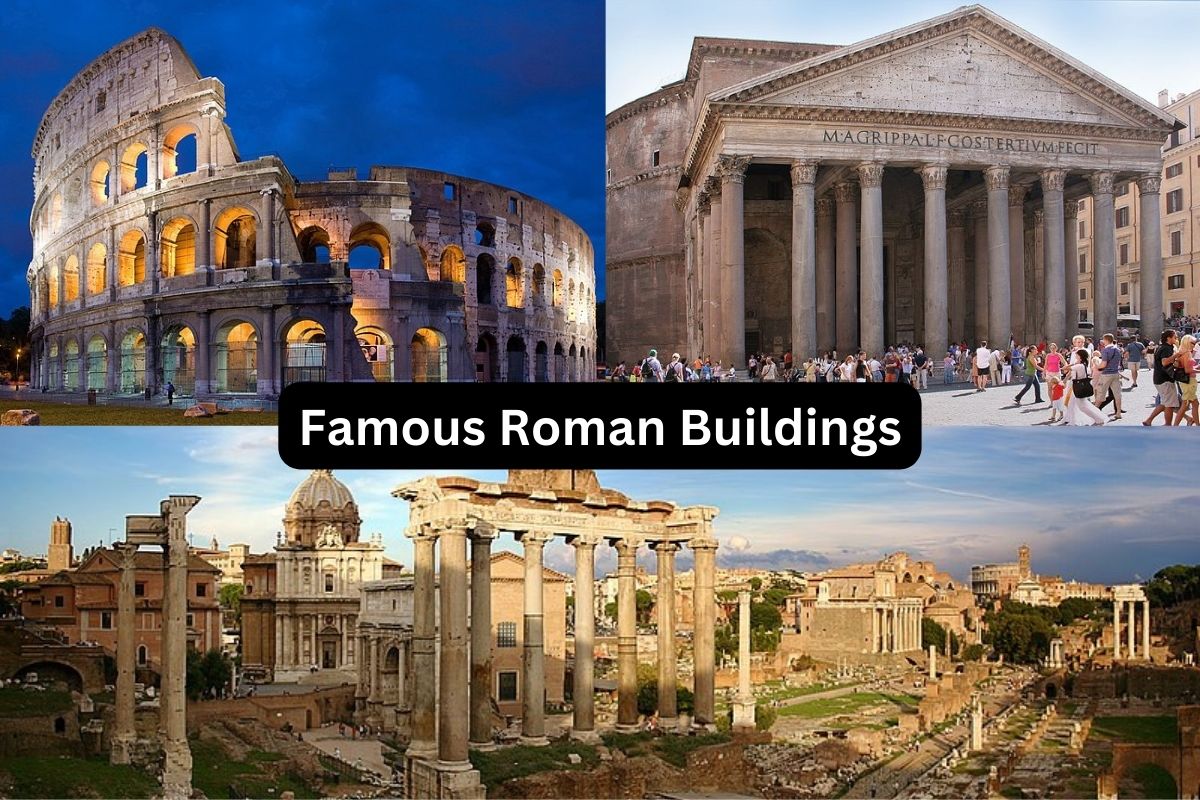The ancient Roman Empire is known for its incredible feats of engineering and architecture, and its legacy still resonates today in the many famous buildings and structures that have survived for centuries.
From the awe-inspiring Colosseum to the intricate detail of the Pantheon, these Roman buildings have left an indelible mark on the world and continue to captivate and inspire visitors from around the globe.
Whether you’re interested in the history of ancient Rome, the achievements of its architects and builders, or simply in awe of their incredible structures, the famous Roman buildings are a must-see for anyone interested in the wonders of human creativity and ingenuity.
Famous Roman Buildings
1. Colosseum

The Colosseum, also known as the Flavian Amphitheatre, is one of the most famous and iconic buildings of ancient Rome. It is located in the heart of Rome and was built between 70 and 80 AD. The Colosseum was originally used for gladiatorial contests and public spectacles, such as animal hunts and mock sea battles.
The Colosseum was a massive structure, measuring 189 meters long, 156 meters wide, and 50 meters high. It could hold up to 80,000 spectators, making it one of the largest amphitheaters in the world.
Also Read: Famous Romans
The outer walls were made of travertine stone and brick, while the interior was supported by a system of vaults and arches made of concrete.
The Colosseum was also an engineering marvel of its time, with a complex system of elevators and trapdoors that allowed for the quick and efficient movement of animals and gladiators onto the arena floor. The arena itself was a wooden platform covered in sand, and could be flooded for naval battles.
Today, the Colosseum is a popular tourist attraction and a symbol of the ancient Roman Empire. Although it has suffered damage over the centuries from earthquakes, fires, and vandalism, it still stands as a testament to the incredible engineering and architectural achievements of ancient Rome.
2. Pantheon Rome
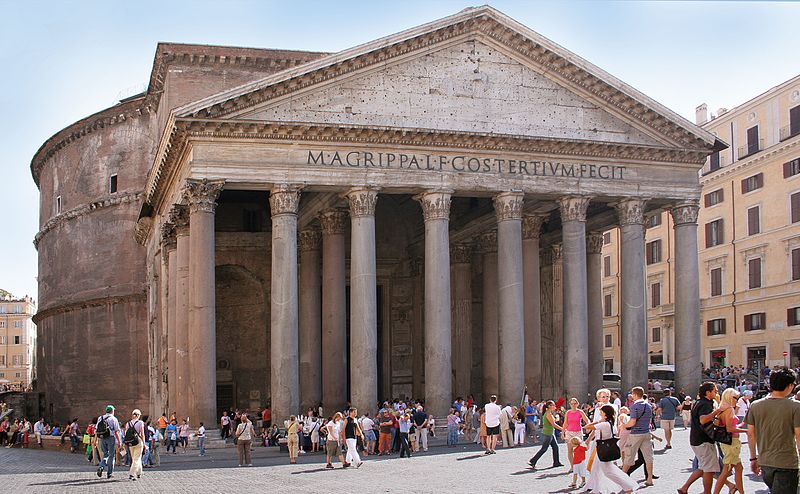
The Pantheon is one of the most well-preserved and iconic ancient Roman buildings in Rome. Originally built as a temple to all the gods in 27 BC by Marcus Agrippa, it was rebuilt by Emperor Hadrian in 120 AD. It has since served many purposes, including as a church since the 7th century.
The Pantheon is famous for its unique design, particularly its massive dome. It is still the largest unreinforced concrete dome in the world, with a diameter of 43 meters.
Also Read: Accomplishments of Ancient Rome
The dome is made up of several layers of concrete, with the lower layers being denser and stronger to support the weight of the upper layers. The oculus, or circular opening, in the center of the dome is 8 meters in diameter and is the only source of natural light in the building.
The entrance to the Pantheon is marked by a grand portico with 16 granite columns. The interior features a circular rotunda with niches that once held statues of the gods. The floor is made up of colorful marble inlaid in geometric patterns.
The Pantheon is a remarkable example of ancient Roman architecture and engineering, and its design has influenced countless buildings throughout history. Today, it remains a popular tourist attraction and a symbol of the grandeur and legacy of the ancient Roman Empire.
3. Roman Forum
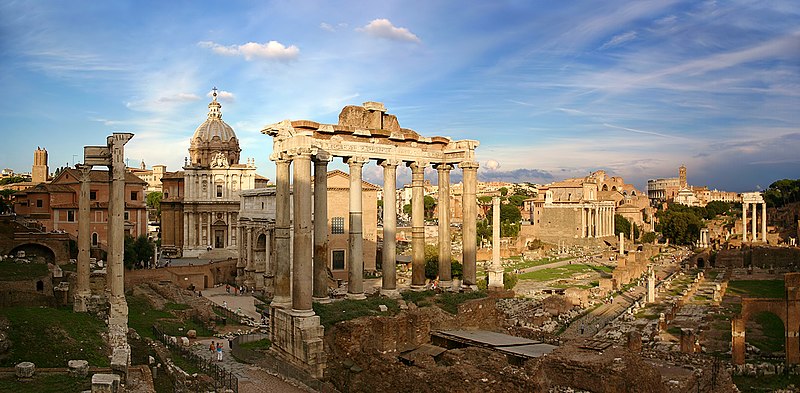
The Roman Forum, also known as the Forum Romanum in Latin, was the center of political and social activity in ancient Rome.
Also Read: The Roman Forum Facts
It is located in a valley between the Palatine and Capitoline Hills in Rome and served as a marketplace, religious center, and location for public speeches and criminal trials.
The Forum was surrounded by important government buildings and temples, such as the Temple of Saturn, the Basilica Julia, and the Curia Julia, where the Roman Senate met.
Also Read: Pompeii Facts
The Rostra, a platform used for public speaking, was located in the Forum and was the site of many famous speeches, including those of Julius Caesar and Cicero.
The Forum was also home to many important monuments, such as the Arch of Titus, which commemorates the Roman victory over Jerusalem, and the Temple of Vesta, which housed the sacred fire that was tended by the Vestal Virgins.
Over time, the Forum fell into disrepair and was buried under layers of debris and rubble. Today, many of the original buildings and structures have been excavated and restored, making it a popular tourist attraction and a window into the daily life of ancient Rome.
4. Diocletian’s Palace
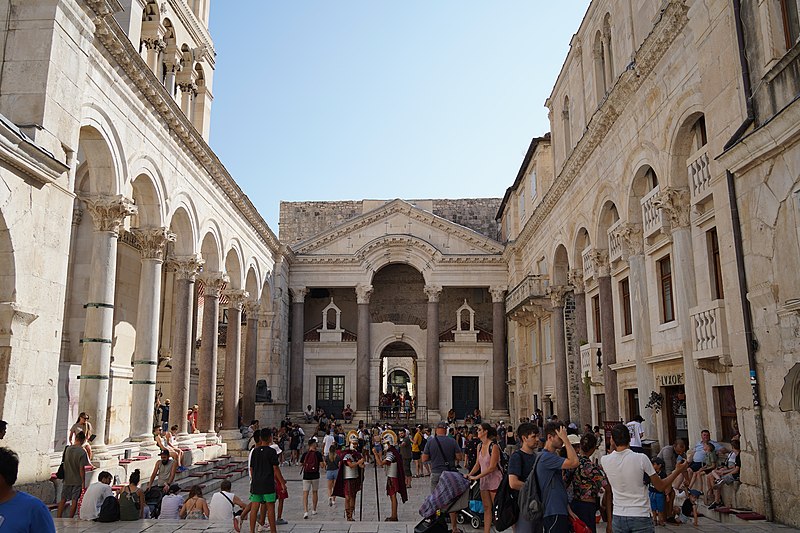
Diocletian’s Palace is an ancient Roman palace and fortress located in the city of Split, Croatia. It was built by the Roman Emperor Diocletian in the 4th century AD as a place for him to retire after his abdication.
The palace complex covers an area of about 30,000 square meters and is one of the most well-preserved examples of ancient Roman architecture in the world.
The palace is made up of four main sections, each with its own function. The northern section was the imperial apartments, while the eastern section was the military barracks. The southern section was for the imperial household, and the western section was the commercial and residential area.
Also Read: The Fall of the Roman Empire Timeline
The palace is surrounded by walls and watchtowers, with four gates providing access to the interior. The walls are up to 2 meters thick in places and were designed to protect the palace from attack.
The palace is notable for its mix of architectural styles, with influences from ancient Rome, Greece, and the Mediterranean region.
It features a central peristyle courtyard, where visitors can see the remains of the emperor’s private apartments, the temple of Jupiter, and the mausoleum where Diocletian was eventually buried.
Today, the palace is a UNESCO World Heritage Site and is open to visitors. It has been used as a location for various films and television series, including the hit HBO series Game of Thrones.
5. Castel Sant’Angelo
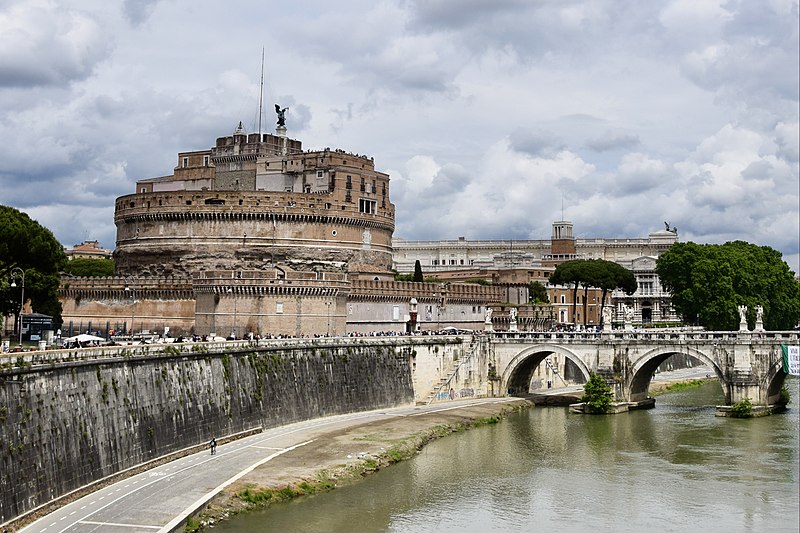
Castel Sant’Angelo, also known as the Mausoleum of Hadrian, is a cylindrical fortress located in Rome, Italy. It was originally built in the 2nd century AD as a mausoleum for the Roman Emperor Hadrian and his family.
The building was later converted into a castle in the 14th century and served as a military fortress, a papal residence, and a prison. It is famous for its impressive architecture, including its cylindrical shape, massive walls, and intricate statues and carvings.
The castle is located on the banks of the Tiber River and is connected to the Vatican City via a fortified corridor known as the Passetto di Borgo. The castle’s strategic location made it an important part of Rome’s defenses, and it was used to protect the city during several conflicts, including the Sack of Rome in 1527.
Today, Castel Sant’Angelo is open to the public and houses a museum that showcases the castle’s history and the art and artifacts that have been collected there over the centuries.
Visitors can climb to the top of the castle and enjoy panoramic views of Rome and the surrounding area. It is a popular tourist attraction and a symbol of the rich history and culture of Rome.
6. Hadrian’s Villa
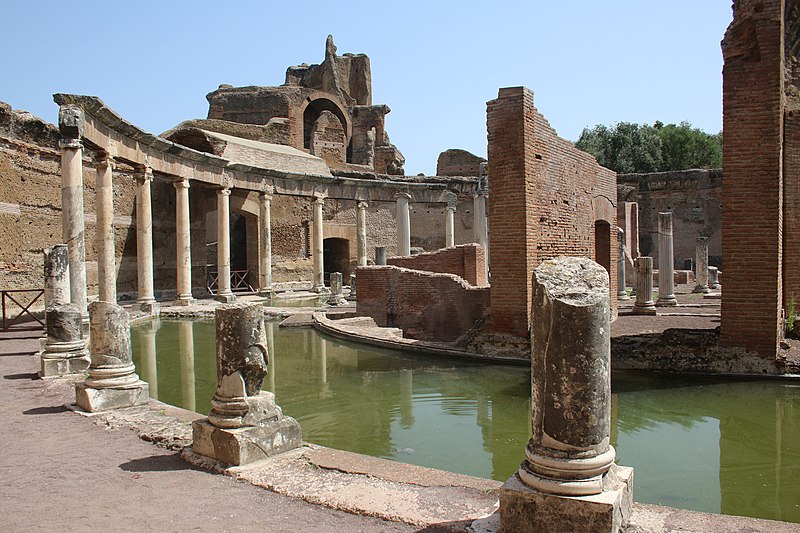
Hadrian’s Villa is a vast complex of ruins located near Tivoli, about 30 km east of Rome. It was built by the Roman Emperor Hadrian in the 2nd century AD as his private retreat and a reflection of his love of Greek culture.
The villa complex is one of the most impressive and well-preserved examples of ancient Roman architecture and engineering. It covers an area of about 120 hectares and contains over 30 buildings, including palaces, baths, temples, and theaters.
The villa was designed to resemble a small city, with gardens, fountains, and courtyards that provided a serene and peaceful atmosphere. It also included a large pool that was used for swimming and water games.
One of the most famous parts of the villa is the Canopus, a long rectangular pool surrounded by a colonnade and statues that was inspired by the Egyptian city of Canopus. Another notable feature is the Maritime Theater, a circular island surrounded by a moat that was used for private performances and entertainment.
Today, Hadrian’s Villa is a UNESCO World Heritage Site and a popular tourist attraction. Visitors can explore the ruins and see the remains of the impressive buildings and gardens that once made up the emperor’s private retreat.
7. Ara Pacis
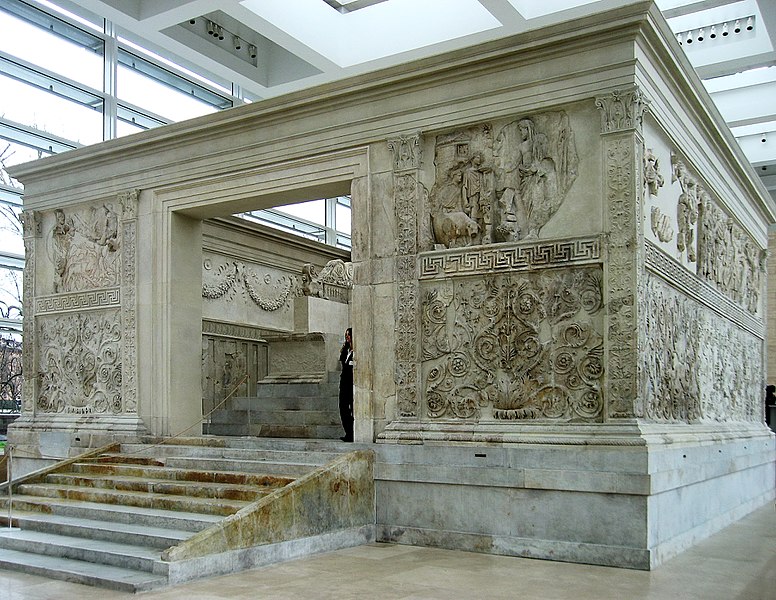
The Ara Pacis Augustae, also known as the Altar of Augustan Peace, is an ancient Roman altar located in Rome, Italy.
It was commissioned by the Roman Senate in 13 BC to celebrate the return of Emperor Augustus to Rome after three years of military campaigns in Spain and Gaul.
The altar is a stunning example of ancient Roman art and architecture, with intricate reliefs depicting the imperial family, important political figures, and scenes of sacrifice and ceremony. The altar is enclosed in a rectangular building made of white marble, which was originally open to the sky.
The Ara Pacis was lost for centuries and was only rediscovered in the 16th century. It underwent extensive restoration in the early 20th century and was moved to its current location in a modern building designed by American architect Richard Meier in 2006.
Today, the Ara Pacis is a popular tourist attraction and a symbol of the art and culture of ancient Rome. Visitors can explore the altar and its surrounding museum, which features exhibits on the history of the altar, its restoration, and the importance of the Augustan Age in Roman history.
8. Theatre of Marcellus
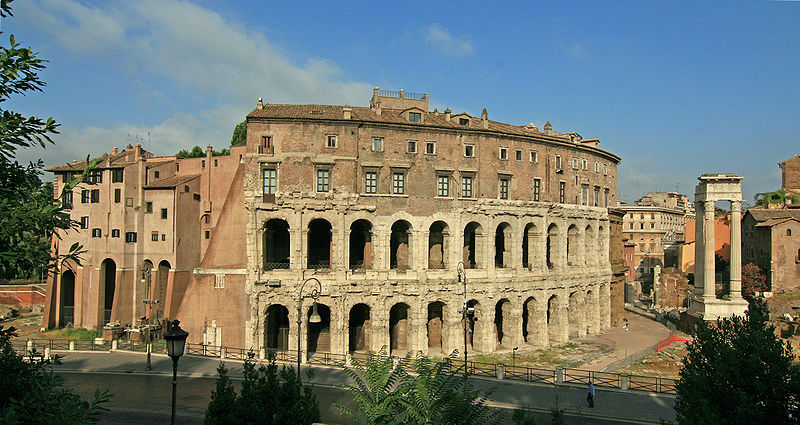
The Theatre of Marcellus, also known as the Teatro di Marcello in Italian, is an ancient Roman theater located in Rome, Italy. It was built by Emperor Augustus in the 1st century BC and completed by his successor, Emperor Tiberius.
The theater was named after Julius Caesar’s nephew and heir, Marcus Marcellus, who had planned to build a theater in the same location before his untimely death. The Theater of Marcellus was one of the largest and most impressive theaters of ancient Rome, with a seating capacity of up to 20,000 people.
The theater was used for a variety of performances, including plays, dances, and musical concerts. It was also the site of gladiatorial contests and wild animal hunts. The theater’s stage was decorated with elaborate sets and machinery that allowed for dramatic effects, such as the appearance of gods or the sinking of ships.
Over the centuries, the Theater of Marcellus fell into disrepair and was used as a quarry for building materials. Today, only the lower levels of the theater remain, but they still offer a glimpse into the grandeur of ancient Roman architecture and engineering.
The theater has been incorporated into the surrounding buildings, and the arches and columns of the theater can be seen in the facades of later buildings constructed on top of it.
9. Baths of Caracalla
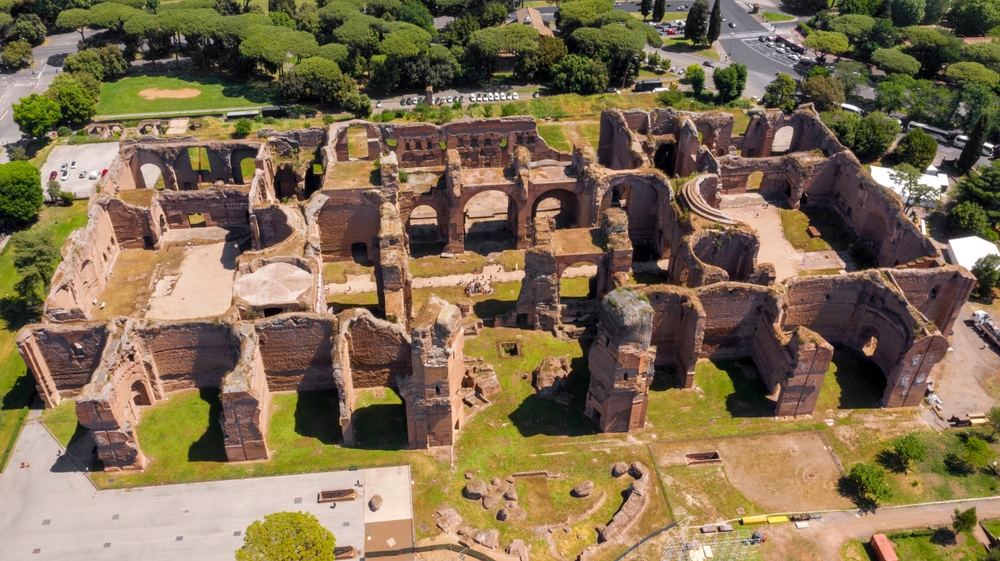
The Baths of Caracalla, also known as the Thermae Antoninianae, are ancient Roman public baths located in Rome, Italy. They were built in the early 3rd century AD during the reign of Emperor Caracalla and were one of the largest and most magnificent public baths of ancient Rome.
The baths were open to all citizens of Rome and could accommodate up to 1,600 bathers at a time. They featured a variety of facilities, including hot and cold baths, saunas, steam rooms, gyms, and libraries. The complex also included gardens, fountains, and open spaces for socializing and relaxation.
The Baths of Caracalla were renowned for their grandeur and beauty, with ornate mosaics, marble floors, and intricate frescoes covering the walls and ceilings. The complex was also adorned with statues and other works of art, many of which have been preserved and can be seen today in museums around the world.
Over the centuries, the Baths of Caracalla fell into disrepair and were eventually abandoned. Today, the ruins of the baths are a popular tourist attraction and a testament to the architectural and engineering skills of ancient Rome.
Visitors can explore the remains of the baths, including the massive central hall, the caldarium (hot bath), and the natatio (swimming pool), and imagine what life was like in ancient Rome.
10. Tower of Hercules
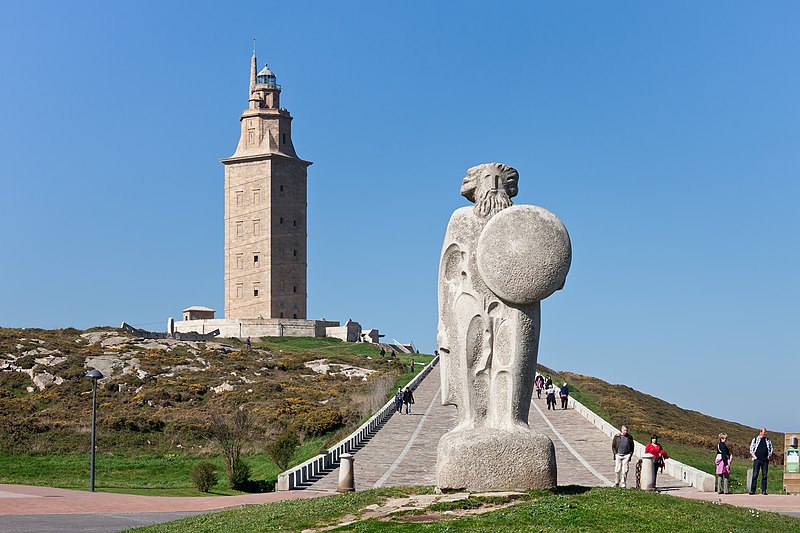
The Tower of Hercules is an ancient Roman lighthouse located in the city of A Coruña in Galicia, northwest Spain. It was built in the late 1st century AD during the reign of Emperor Trajan to guide ships into the port of A Coruña.
The tower stands 55 meters tall and is made of stone, with a square base and a cylindrical tower. It was originally built with an open flame on the top, which was later replaced with a series of mirrors and lenses that reflected the light and increased its range.
The Tower of Hercules has survived for over 2,000 years and is the oldest functioning lighthouse in the world. It has been in continuous use since its construction and has undergone several renovations and modifications over the centuries, including the addition of a statue of Hercules at the top of the tower in the 18th century.
Today, the Tower of Hercules is a UNESCO World Heritage Site and a popular tourist attraction. Visitors can climb to the top of the tower and enjoy panoramic views of the city and the surrounding coastline. The tower is also home to a museum that showcases the history of the lighthouse and the maritime traditions of Galicia.
11. Porta Nigra
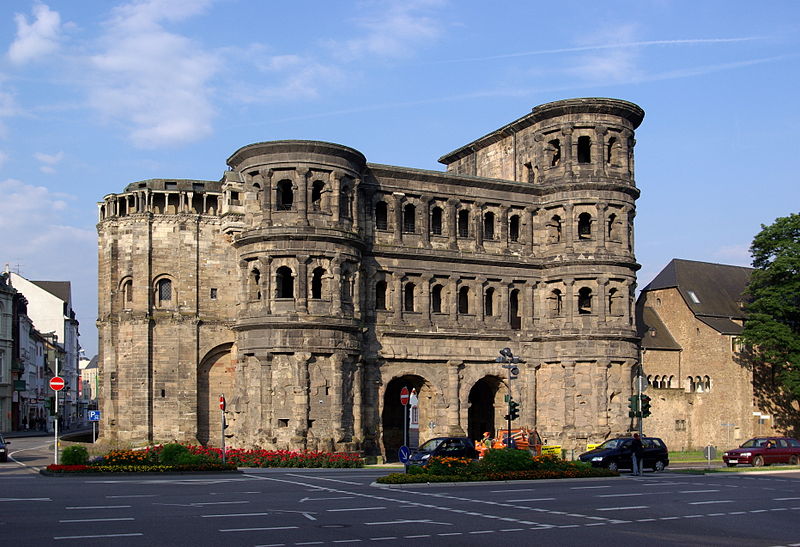
Porta Nigra is an ancient Roman city gate located in the city of Trier, Germany. It was built in the late 2nd century AD and is the largest Roman city gate north of the Alps.
The gate is made of large blocks of sandstone and has a distinctive dark color, which gave it its name (Porta Nigra means “black gate” in Latin). It was originally one of four gates in the city walls and was used to control access to the city.
Over the centuries, the Porta Nigra fell into disrepair and was used as a church, a dwelling, and a storage facility. It was eventually restored in the 19th century and is now a popular tourist attraction and a symbol of the rich history and culture of Trier.
Visitors can explore the interior of the gate, which features several levels and passageways that were used by Roman soldiers to defend the city. The gate also houses a museum that showcases the history of Trier and the Roman Empire, with exhibits on ancient art, architecture, and everyday life.
Today, the Porta Nigra is a UNESCO World Heritage Site and a reminder of the incredible architectural and engineering achievements of ancient Rome.
12. Aula Palatina
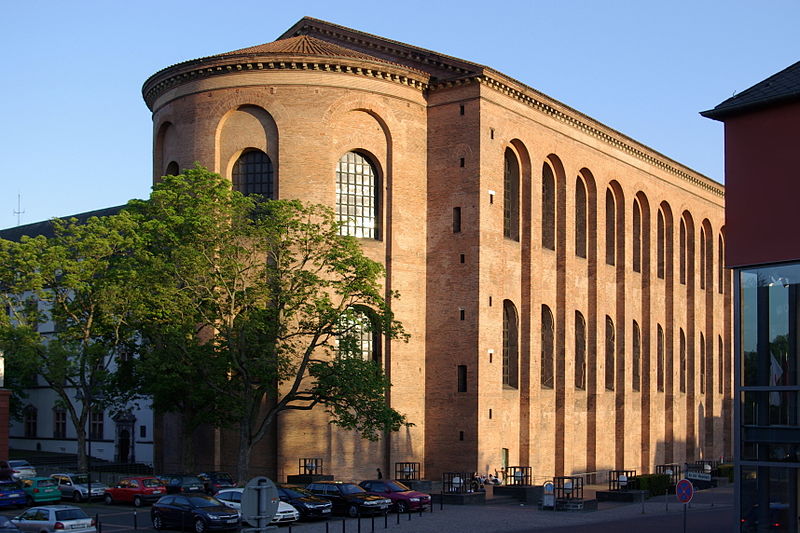
The Aula Palatina, also known as the Basilica of Constantine, is an ancient Roman building located in the city of Trier, Germany. It was built in the early 4th century AD by Emperor Constantine as a part of his palace complex in the city.
Also Read: Accomplishments of Constantine The Great
The Aula Palatina is one of the largest surviving Roman buildings north of the Alps and is notable for its impressive size and grandeur. The building measures 67 meters long, 27 meters wide, and 33 meters high and is made of brick and sandstone.
The interior of the Aula Palatina is a single hall with a high barrel vaulted ceiling supported by two rows of columns. The floor was originally covered in marble and mosaics, while the walls were decorated with frescoes and other works of art.
Over the centuries, the Aula Palatina has served many purposes, including as a church, a palace, a barracks, and a storehouse. It was also used as a hospital during the Napoleonic Wars.
Today, the Aula Palatina is a UNESCO World Heritage Site and a popular tourist attraction. Visitors can explore the interior of the building and learn about its rich history and significance in the Roman Empire.
13. Temple of Bacchus
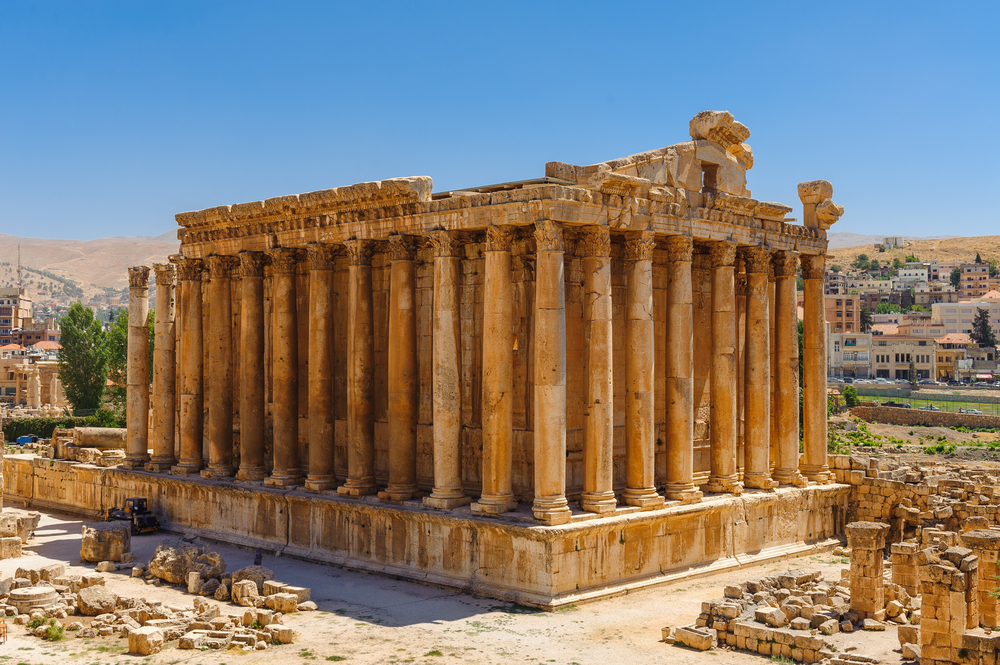
The Temple of Bacchus is an ancient Roman temple located in the city of Baalbek, Lebanon. It was built in the 2nd century AD and is one of the best-preserved and most impressive examples of ancient Roman architecture in the world.
The temple was dedicated to the god of wine, Bacchus, and is surrounded by a large courtyard with a portico. The temple itself is a rectangular building with a large entrance and a portico with 42 columns.
The temple is notable for its intricate decorations, including elaborate carvings on the columns and the pediment, which features a scene depicting Bacchus and his followers. The interior of the temple is equally impressive, with a high ceiling supported by columns and a large altar in the center.
Over the centuries, the Temple of Bacchus was damaged by earthquakes and other natural disasters, but it was extensively restored in the 18th and 19th centuries.
Today, it is a UNESCO World Heritage Site and a popular tourist attraction, drawing visitors from all over the world who come to marvel at its beauty and learn about the history of ancient Rome.
